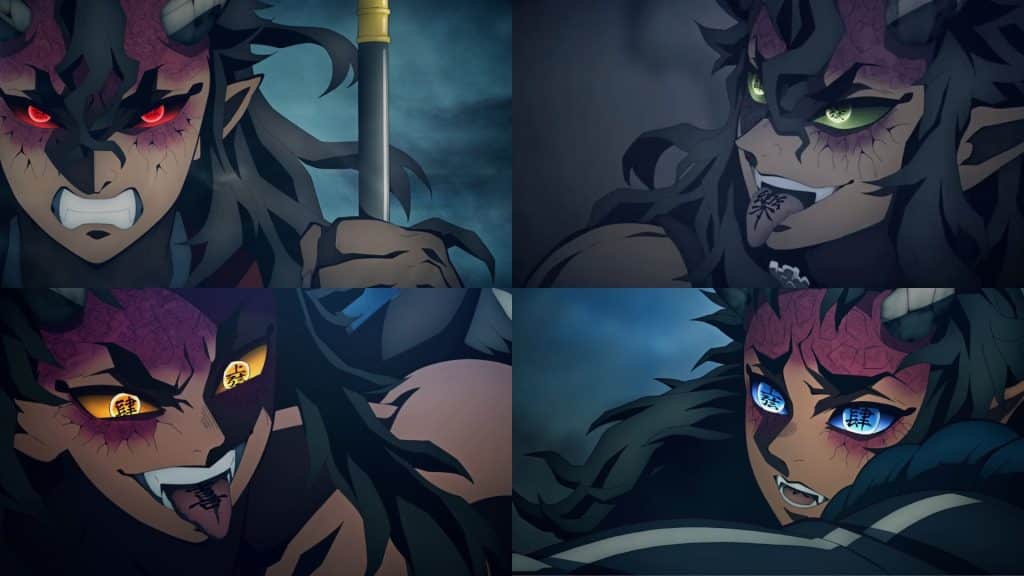The Hantengu clones in the Swordsmith Village arc of Demon Slayer depict the demon slayers engaging in combat with two Upper Moons at once.
However, the real test comes when they encounter Upper Moon Four, Hantengu, who generates potent of Hantengu clones with a range of capabilities.
As Demon Slayer Season 3 approaches its finale, enthusiasts have grown more familiar with Hantengu’s powers. Although Muichiro triumphs over Gyokko, Hantengu persists in giving the demon slayers a hard time.
Hantengu engages in battle using Hantengu clones, which are manifestations of his emotions, comprising seven distinct personas: Hantengu, Sekido, Karaku, Aizetsu, Urogi, Zohakuten, and Urami. Each of these personas embodies unique abilities and exhibits remarkable strength.
Given that these clones stem from an Upper Moon Four, overcoming them is no easy task. It necessitates the collective efforts of Tanjiro, Genya, Mitsuri, and Nezuko to conquer this monster. Let’s delve into the various forms of Hantengu in Demon Slayer.
The Many Faces of Hantengu Clones
Hantengu: A Reflection of Cowardice
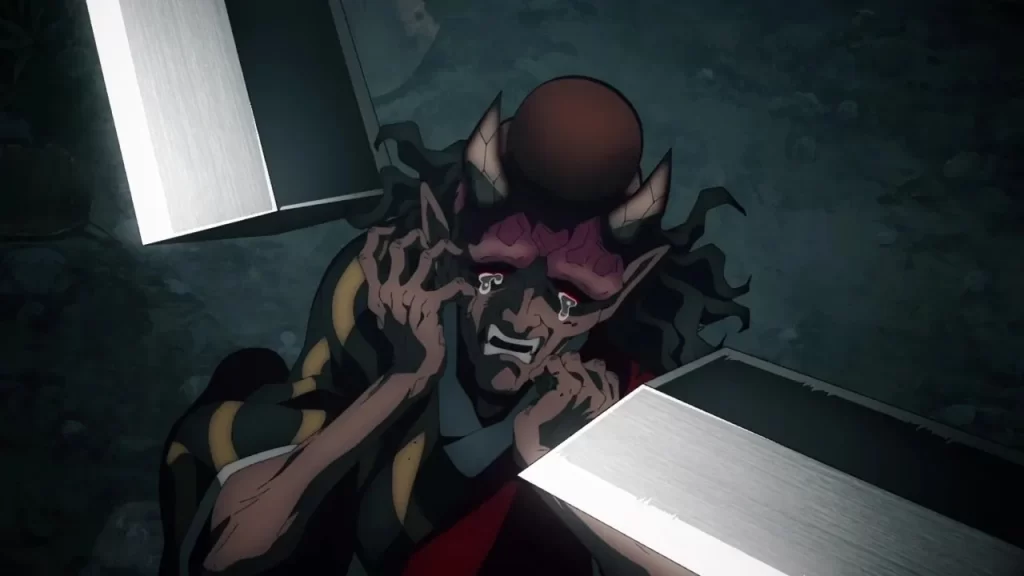
Hantengu’s primary form embodies intense cowardice and anxiety, exhibiting paranoid, terrified, and delusional traits. He is easily startled by his surroundings and often reacts fearfully to trivial events.
This form enables Hantengu to materialize his emotions into younger versions of himself using his Blood Demon Art. Each clone’s tongue bears a kanji representing the emotion it embodies.
These Hantengu clones, each with a unique appearance, skill set, and arsenal, all possess at least Upper-Rank level strength and appear as younger versions of Hantengu.
When Hantengu’s head is severed, his Blood Demon Art activates, dividing his body and head into two identical clones, one embodying rage and the other, joy.
Sekido: The Embodiment of Anger
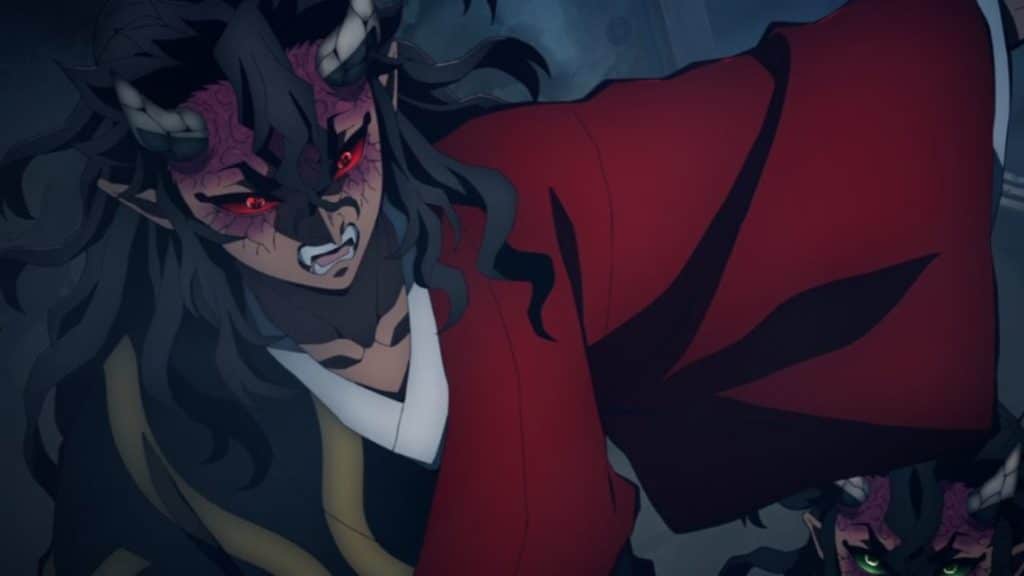
Hantengu clones Sekido represents Hantengu’s anger, displaying constant vexation, irritation, and rage, even towards his fellow clones. He is easily infuriated when the clones do not meet his expectations and are defeated by the Demon Slayers.
Sekido’s Blood Demon Art, “Electricity Generation,” allows him to produce electricity that alternates between blue and red. He activates this power by stabbing his Khakkhara into the ground, paralyzing targets instantly, even if airborne, and rendering them unconscious within seconds.
His Blood Demon Art affects a wide area, enabling him to incapacitate multiple opponents at once. Sekido can also absorb the bodies of Karaku, Urogi, and Aizetsu, merging to become Zohakuten.
Karaku: The Personification of Pleasure
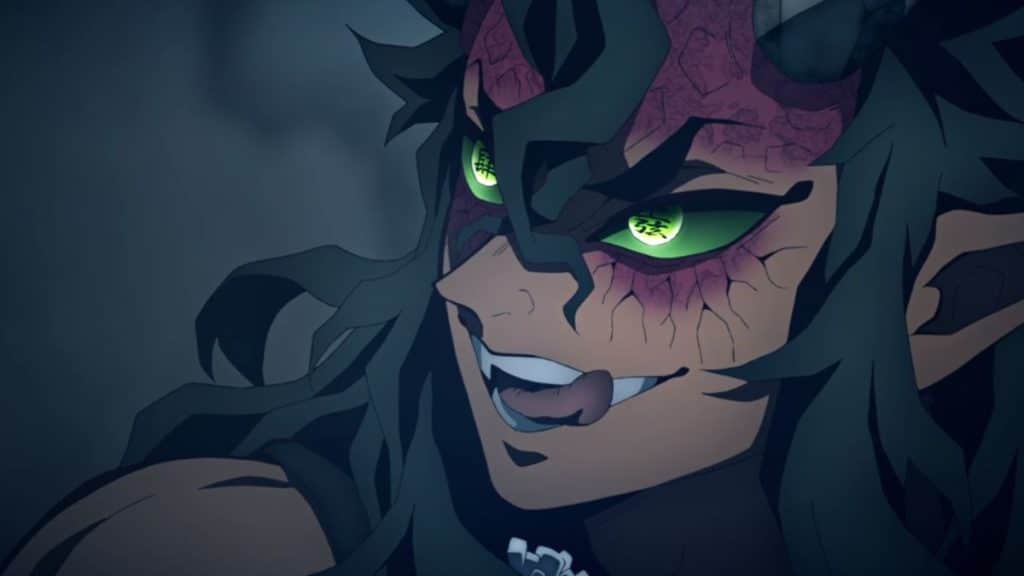
Representing Hantengu’s pleasure, Karaku exhibits a carefree and relaxed demeanor. During battles, he continually compliments Genya, Tanjiro, and Nezuko, treating the encounter more like a game.
Karaku’s Blood Demon Art, “Wind Blasts,” enables him to generate potent wind gusts using his maple leaf-shaped Uchiwa.
With a simple swing of his Uchiwa, Hantengu Clones Karaku can create a windstorm strong enough to knock Muichiro unconscious, create massive craters, demolish entire buildings, and crush both Demon Slayers and demons under its immense pressure.
Strategically using his Blood Demon Art, Karaku can engulf the entire battlefield with powerful wind gusts, hindering his opponents’ movements as if they were caught in a tornado. However, Nezuko demonstrates that this ability can be turned against him by anyone wielding his Uchiwa.
Aizetsu: The Manifestation of Sorrow
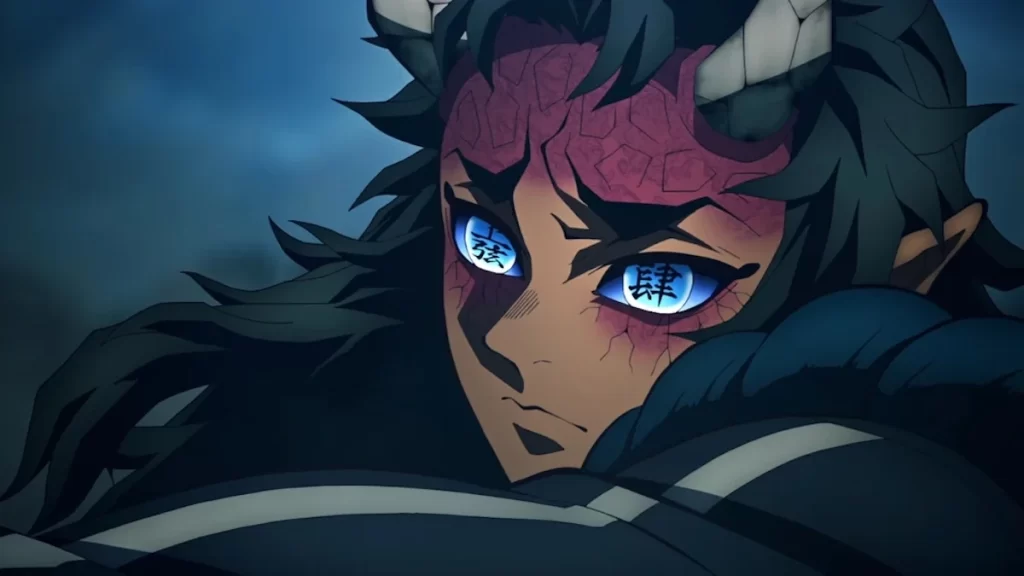
Aizetsu, embodying Hantengu’s sorrow, exudes dejection and negativity, describing everything as depressing. Among all the manifestations, he is the most composed, analyzing his opponents and formulating strategies instead of squabbling with other clones.
Aizetsu, Hantengu clones, can alter his flesh to some extent, like all demons. He uses this ability to transform his flesh into a Jumonji Yari, a cross-shaped spear.
His Blood Demon Art, “Spear Projection,” enables him to project his Yari’s thrusting attack over vast distances, allowing him to target his enemies from afar.
Aizetsu remains unfazed when Genya uses a shotgun loaded with Nichirin steel shot to break his neck. He even manages to attack while keeping his head intact and healing his neck effortlessly.
Urogi: The Embodiment of Joy
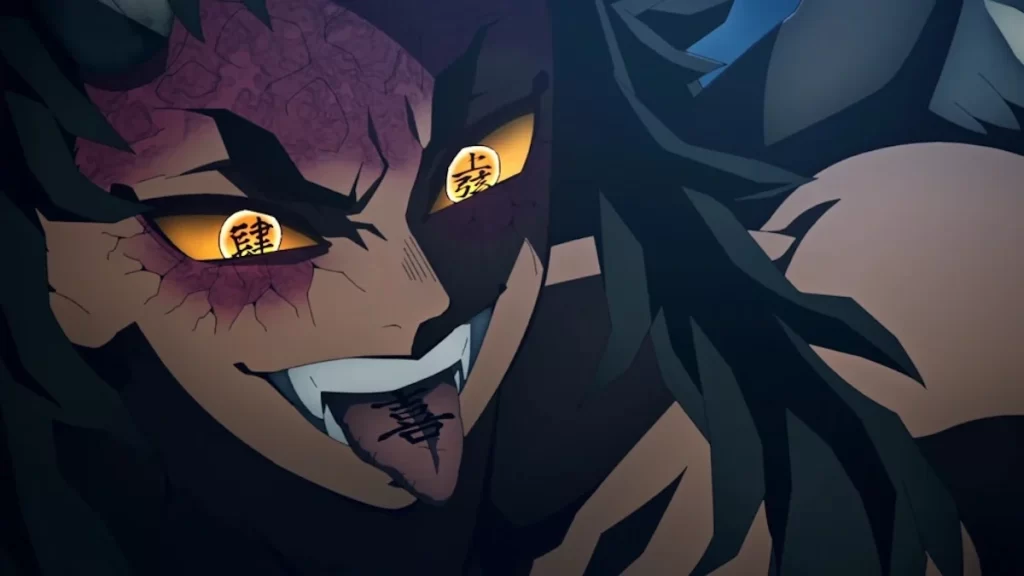
Urogi, the most cheerful of Hantengu’s clones, embodies Hantengu’s joy. Similar to Karaku, Urogi perceives the battle with the Demon Slayers as merely a game or amusement.
Urogi’s unique physiology grants him bird-like characteristics and abilities, including massive feathered wings and razor-sharp claws. His enormous wings enable him to fly at incredible speeds, and his talons can cut through diamonds.
Hantengu clones Urogi’s Blood Demon Art, “Sonic Scream,” allows him to produce powerful sound waves from his mouth. His scream is potent enough to temporarily disorient Tanjiro, causing him to bleed from his nose and ears.
Zohakuten: The Incarnation of Hatred
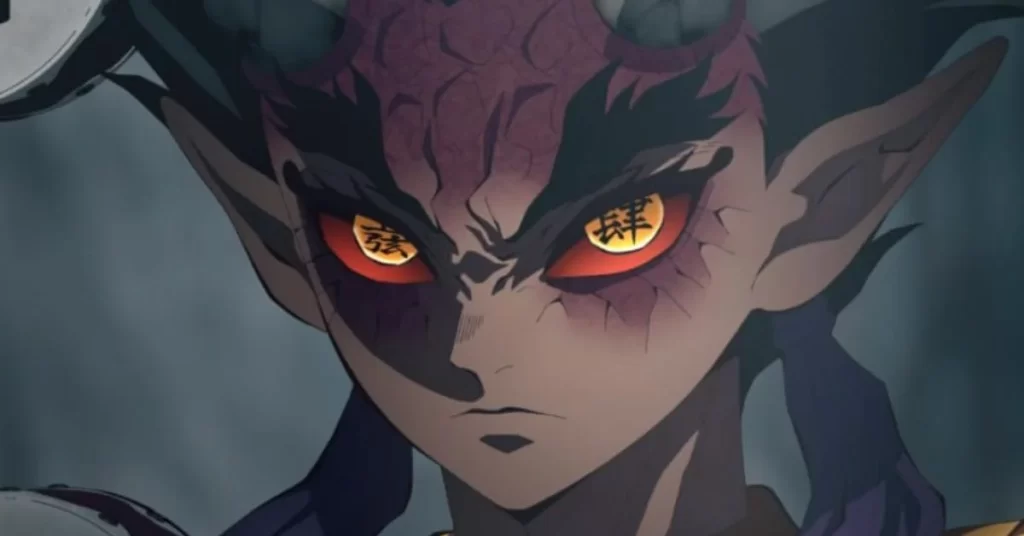
Zohakuten is created when Sekido absorbs the other clones, resulting in shared personality traits. He is the most potent of all Hantengu’s clones, displaying a foul-mouthed demeanor similar to Sekido and continuously hurling insults at his adversaries.
Besides Sekido, Zohakuten is the most intelligent and insightful of all the clones. His primary Blood Demon Art, “Wood Manipulation,” enables him to manipulate and transform the flora in his surroundings. This ability is activated by striking one of the many drums on his back.
Wood Manipulation is suitable for both long-range and close-range combat. By combining Sekido, Karaku, Aizetsu, and Urogi, Zohakuten can use all four clones’ Blood Demon Arts more effectively. Not only can he utilize these abilities, but he can also transfer them to the wood dragon he creates.
Urami: The Representation of Resentment
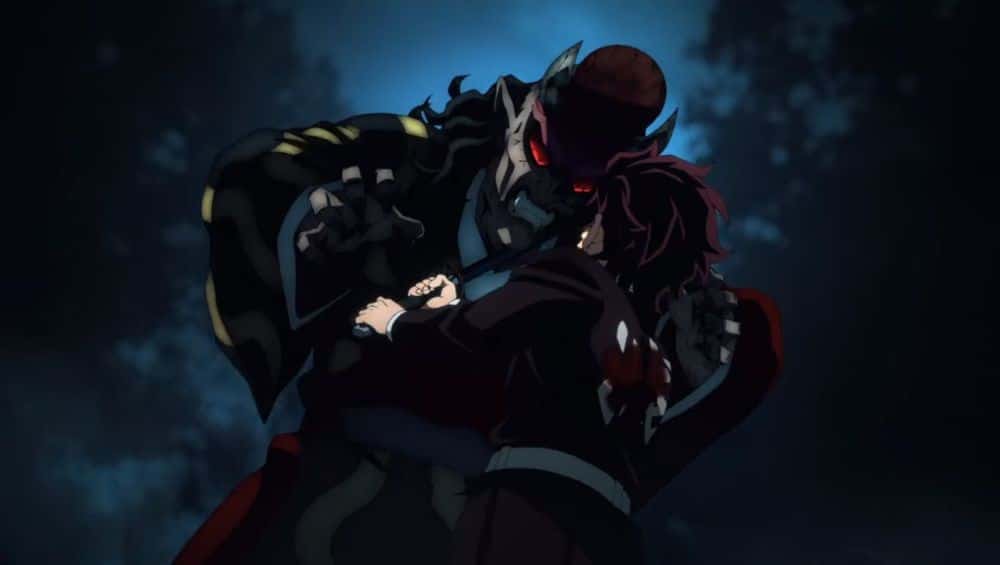
Urami, representing Hantengu’s resentment, is as hypocritical and delusional as Zohakuten and Hantengu. He considers himself weak and innocent while blaming Tanjiro for not recognizing his innocence.
Urami resents being punished and persecuted for crimes he claims to be “innocent” of. He can drastically increase his size, allowing Hantengu to hide inside him in a desperate attempt to escape the Demon Slayers.
Urami’s Blood Demon Art, “Ability Combination,” enables him to use the other clones’ Blood Demon Arts. Although not explicitly mentioned, Urami used Urogi’s sonic scream ability to stun Tanjiro, Nezuko, and Genya.
In conclusion, the different forms of Hantengu in Demon Slayer showcase a range of emotions and abilities, making him a formidable opponent for the demon slayers.
Each clone, representing a specific emotion, possesses unique abilities that challenge the demon slayers in various ways. Ultimately, it takes the combined efforts of Tanjiro, Genya, Mitsuri, and Nezuko to defeat this monstrous demon and his clones.
Unraveling the Mysteries of Hantengu Clones
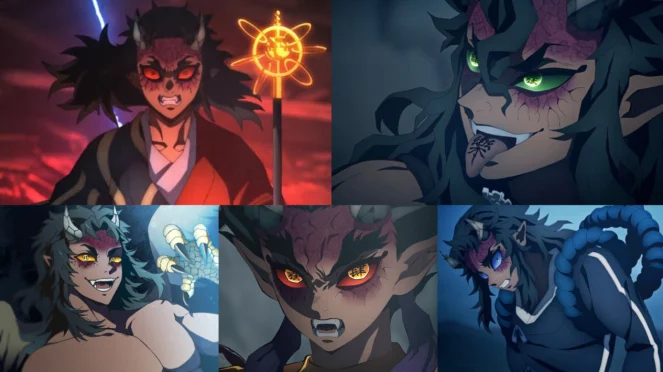
The intriguing aspect of Hantengu’s clones is that each of them carries a distinct characteristic and a unique set of powers, representing different aspects of Hantengu’s personality and emotional state.
These clones are not only a reflection of Hantengu’s emotions but also a strategic defense mechanism against the demon slayers. Let’s delve into the mechanics behind the formation of Hantengu clones and their strategic implications in battles.
The Mechanism of Hantengu Clones Formation
Hantengu’s ability to create clones is linked to his Blood Demon Art. When in danger, Hantengu’s head and body split into two identical clones, each personifying different emotions – rage and joy. This ability to split and create clones is pivotal for Hantengu’s survival as it confuses the enemy and divides their focus.
Strategic Implications of Hantengu Clones
The strategic implication of Hantengu clones lies in their ability to simultaneously attack and defend.
For instance, Sekido, the clone that embodies anger, can generate electricity and paralyze opponents, while Karaku, the manifestation of pleasure, can generate powerful wind gusts to knock the opponents off balance.
This multi-dimensional approach not only overwhelms the opponents but also keeps them guessing about the next move.
Overcoming the Hantengu Clones
Defeating the Hantengu clones is no easy feat. It requires a collaborative effort from the demon slayers, each harnessing their unique abilities to counter the clones’ powers.
Tanjiro, Genya, Mitsuri, and Nezuko had to pool their strengths and strategically target each clone to defeat Hantengu. Their combined effort eventually led to the demise of this formidable foe.
Hantengu Clones: Key Takeaways
The Hantengu clones are a fascinating aspect of the Demon Slayer series. They not only add depth to the character of Hantengu but also bring a strategic dimension to the battles.
Each clone, representing a different emotion and possessing a unique set of skills, presents a distinct challenge to the demon slayers. Overcoming these challenges requires teamwork, strategic planning, and a deep understanding of each clone’s abilities.
In conclusion, the Hantengu clones are an integral part of the Demon Slayer narrative. They symbolize the complexity of emotions and the power they hold.
Moreover, they highlight the importance of teamwork and strategic thinking in overcoming seemingly insurmountable challenges.
As the series progresses, it will be interesting to see how the demon slayers evolve and adapt to new challenges that come their way.
The battle against the Hantengu clones is a testament to the resilience, determination, and strategic brilliance of the demon slayers.
It is a reminder that even the most formidable foes can be defeated with the right strategy, teamwork, and determination.
